FACILITATION OF TRANSACTIONS BY MARKET MAKERS AND TAKERS
Hey guys,
Welcome to my blog.
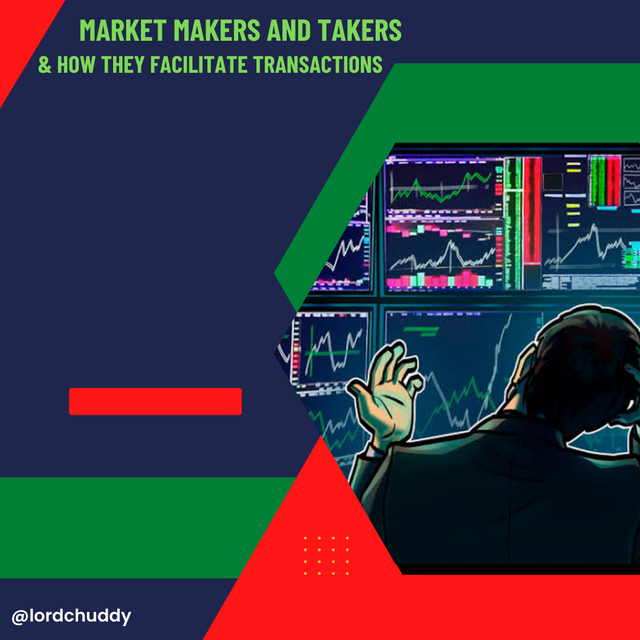
I'm thrilled to be here in this wonderful community, where I can talk with you about yet another fascinating and enlightening subject.
The idea of a market maker and a market taker will be thoroughly examined today because it is crucial in the realm of cryptocurrencies.
And before we get started, we need to learn some fundamentals, so pay attention as we dive into market creation and market taking.
An order book is a digital book that typically comprises a list of sell and buy orders for a particular commodity that are arranged according to price levels.
The number of commodities being solicited for or bid on at various prices in the market is outlined by an order book.
Although some are still hidden, it also aids in identifying the market participants who are behind the sell and buy orders.
The order book provides traders with useful information, which also contributes to a greater degree of market openness.
Many exchanges utilize the order book to list their orders for various currencies and values, and these orders can be either manual or digital.
Typically, the left and right sides of the screen contain information on buyers and sellers.
Because it depicts interactions between buyers and sellers and how easily the asset is purchased and sold, the order book is useful in determining how liquid a given asset is.
An order book can also be utilized by a trader to make smart trading decisions, as it can be used to assess whether institutional investors or individual investors are driving the market and whether a commodity is at a point of support or resistance.
A trader will designate a support level once there are a lot of purchase orders at a certain price and a sale level whenever there are lots of buy orders.
The order book also aids in highlighting order imbalances in the market, which in turn aids in forecasting the market's trajectory.
For instance, when there is a significant imbalance between buy and sell orders, this may signal an increase in the commodity's price because the buying demand is greater than the selling pressure.
In other for an order book to be complete, it must contain certain components which includes the bid and the ask sides.
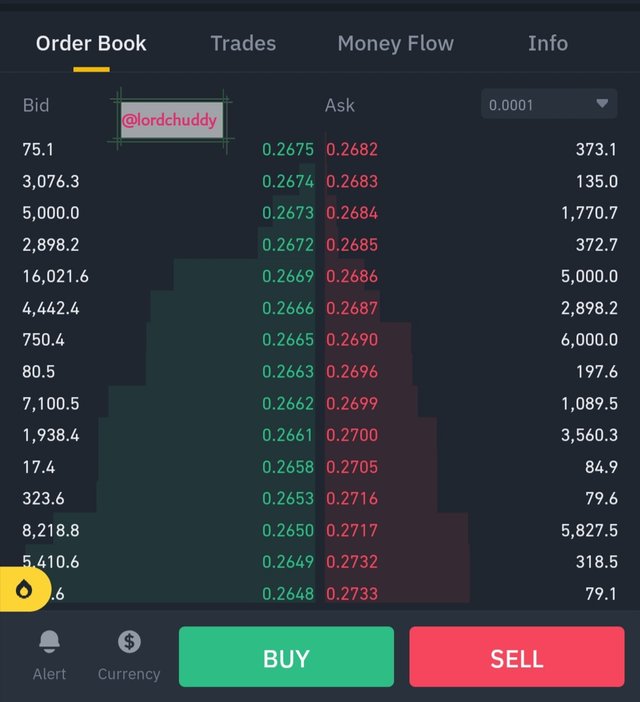
- Bid
A section of an order book known as the bid side is typically written in green.
All of the buy orders and significant buyer-related information are typically located on this side.
The bid side often includes the market's bid price, bid quantity, and bid total (amount x price).
The greatest price that a buyer is willing and able to pay for a specific amount of a commodity at a specific moment is referred to as the bid price.
And throughout the book, the offer prices are listed in descending order from highest to lowest.
The amount of a commodity that a buyer is willing to purchase at a specific price is referred to as the bid quantity.
- Ask
The ask side, which is the exact opposite of the bid side and is typically written in red, contains all sell orders as well as data pertaining to the selling of a specific commodity.
The ask side often includes the market's ask price, ask quantity, and ask total (amount x price).
The term "ask price" describes the greatest price a seller will take for a specific quantity of a good at a specific time.
And down the group, the ask prices are listed in ascending order from the lowest bid price to the highest.
The amount of a commodity that a buyer is willing to purchase at a specific price is referred to as the "ask quantity."
A market maker is defined as a person or group of people (firms) who actively quotes a commodity's two-sided market by providing the market with asks and bids.
Market makers contribute to the liquidity of a market and profit passively from the differential between bid and ask prices.
A market maker lists the buy and sell prices for a sizable number of products, but he only sells when the customer places a buy order.
Without the market maker's operation, there would be inadequate financial transactions and less investment activities, hence the market maker aids in the smooth operation of the financial system by making markets.
A market maker, in a nutshell, is a person who quotes prices on the market independently.
These people wait for the market to sell at their desired price rather than having their order filled right away at the market price.
- Limit order
If you closely examine the order book, you will see that there are many orders there, all of which are priced differently.
And this order, which is a limit order, has not yet been carried out.
A limit order is a purchase or sale order that specifies a price for a commodity that is different from the market price.
A limit order is one that is not immediately filled and is kept open until its pricing demands are satisfied.
In other to act as a market maker, I will be exchanging USDT for Steem on Binance using the option of limit order.
-Buy limit order
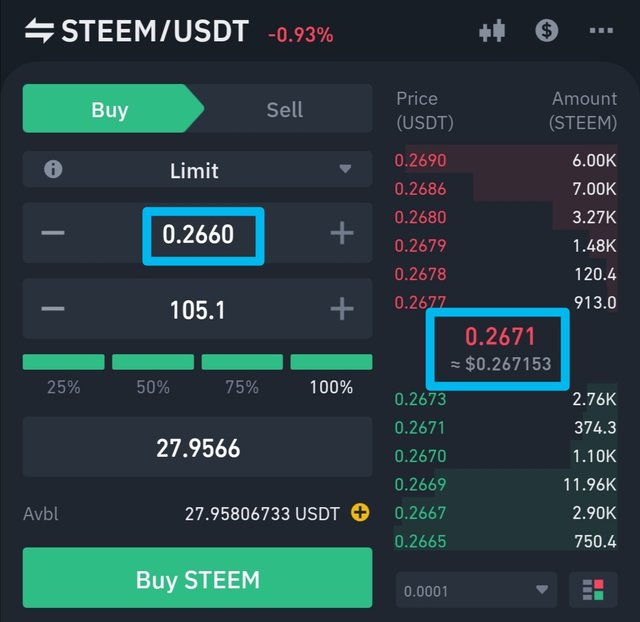
On the left hand side is the current market price of Steem which is $0.2671. But acting as I market market, I have chosen to buy Steem at $0.2660 by setting the desired price as my limit buy order.
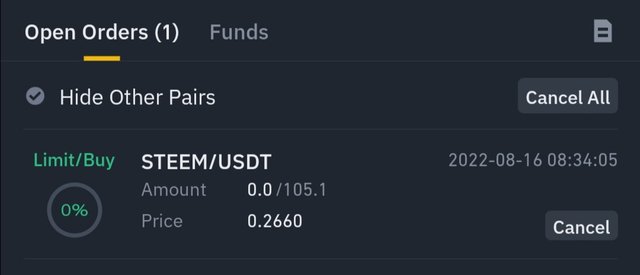
Having done this, my order will remain open until the desired price is achieved in the market.
-Sell limit order
Acting as a market marker by setting up sell limit order is similar to setting a buy limit order. The difference here is that you set a price higher than the current market price and once the price is achieved, the sell position will be triggered.
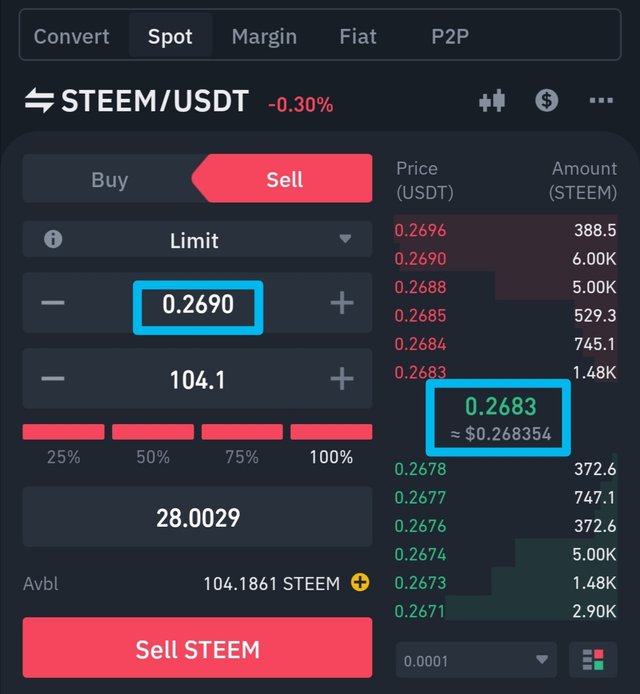
On the right hand side is the current market price of Steem which is $0.2683 and I have set a sell limit order at $0.2690 which is my own preferred price to sell.
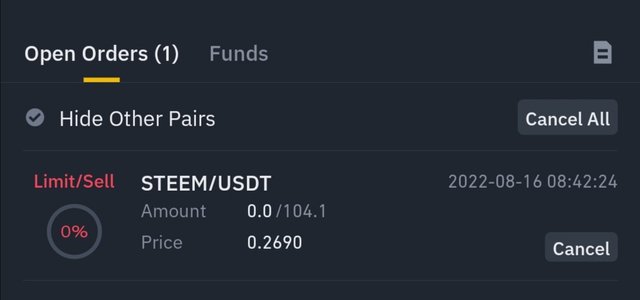
Once my preffered price is achieved, my Steem will be exchanged for USDT immediately.
A market taker is defined as a person who fulfills a market order by doing so.
In other words, market takers are people who start trading at the market's current price; they aid in filling market takers' orders.
Market takers utilize market orders in their transactions because they place an order with the expectation that it would be completed right away.
- Market order
An order placed at the current best price on the market is what is known as a market order.
Unlike a limit order, which doesn't ensure execution, this order is simple to execute.
Market takers typically accept the market order because they are willing to purchase the commodity at the best current price and are not concerned with purchasing it at a certain price.
The market order ensures market execution even though it does not guarantee that the market will be completed at the starting price (owing to slippage).
To act as a market taker, I will be exchanging USDT to Steem using the market order option.
-Buy market order
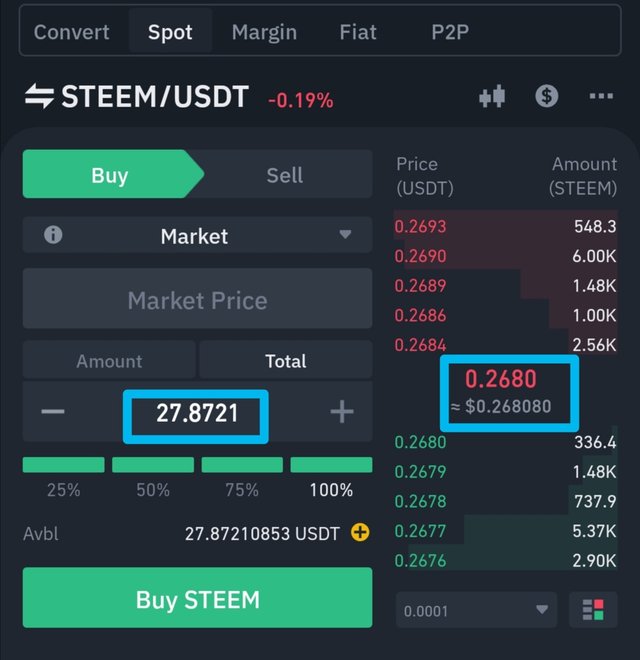
From the above screenshot, I played the role of a market taker by agreeing to exchange $27.8721 USDT for STEEM. The transaction was completed immediately at the current market price.
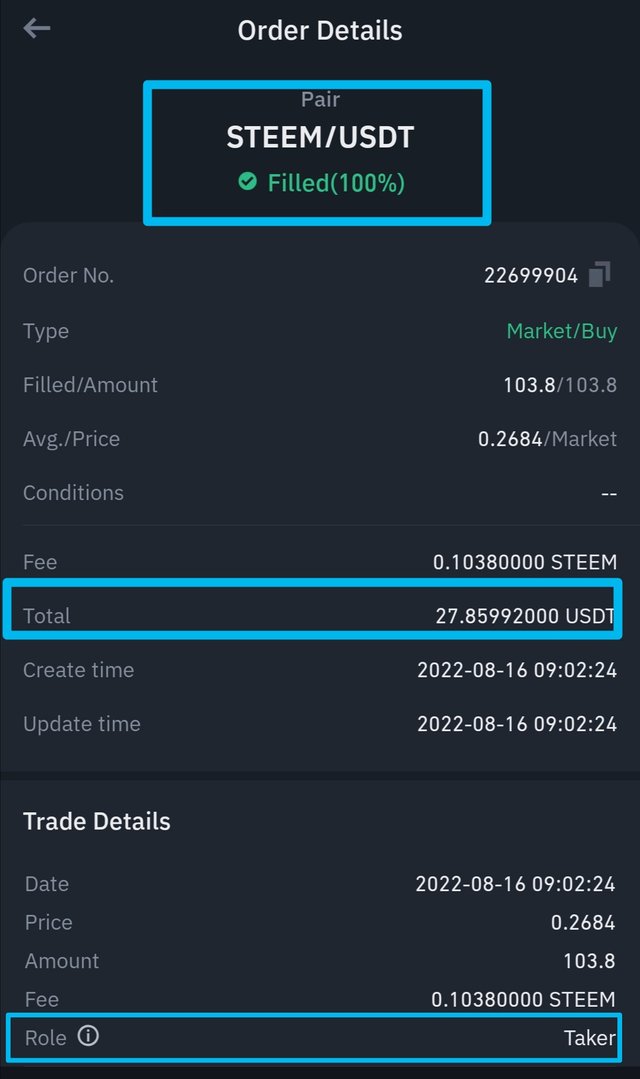
From the screenshot above, you will see that I was clearly stated that I have played the role of a market taker.
-Sell market order
This is a method similar to buy market order because in both cases a trader is playing the role of a market taker.
Here I will be exchanging Steem for USDT at the current market price.
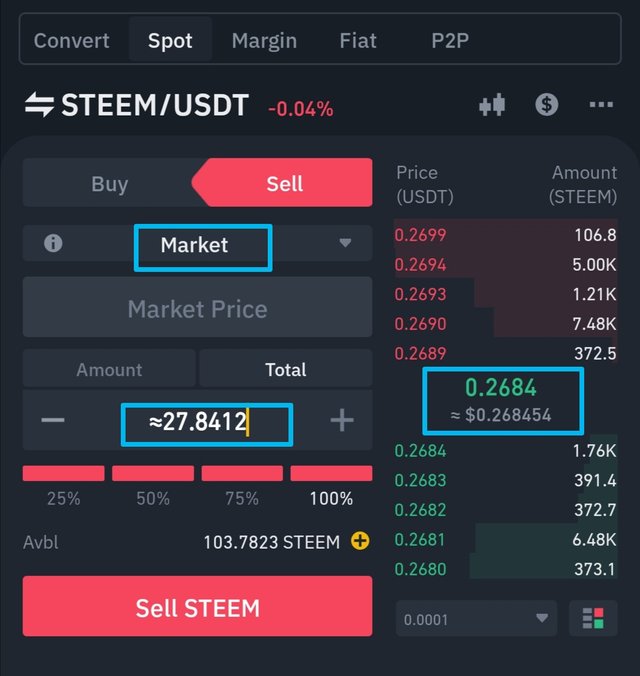
From the above we will see that I am willing to trade 103. 7823 STEEM for $27.841 at the current market price.
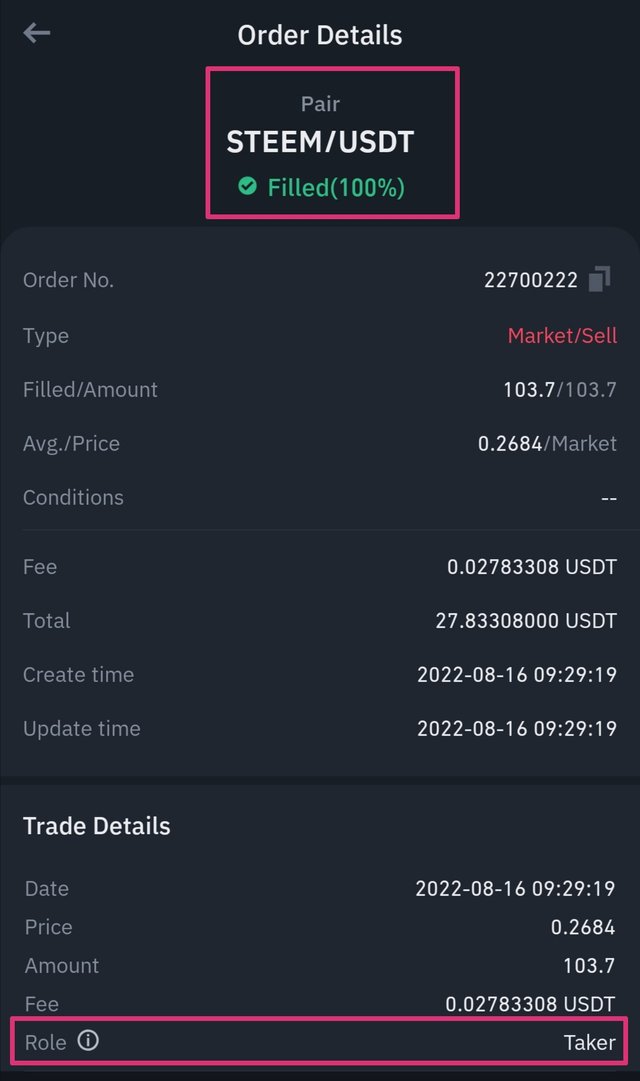
From the above screenshot, you will see that the order was filled immediately and similar to the details of the buy market order, it was clearly stated that I have played the role of a market taker.
Market makers, as is common knowledge, contribute to the creation of liquidity by starting limit orders. And if a coin has a large number of limit orders, that coin is likely to have a large number of pending orders at various prices.
When this occurs, market takers will easily be able to complete orders, making trading simple and quick.
Simply said, market makers produce the orders, which creates liquidity, and market takers accept the created orders, which removes liquidity.
| Market makers | Market takers |
|---|---|
| They are known to provide liquidity on asset pairs | They are known to take liquidity from asset pairs. |
| They often pay minimal or no fee during transaction because they provide liquidity to exchanges | They pay higher fee than the market makers because they serve to take liquidity. |
| Their transaction takes time to be completed and sometimes it never completes. | Their transaction completes immediately because they accept to transact at the current market price. |
| They choose their preffered price | They accept the current market price. |
| They make use of limit orders | They make use of market orders. |
| Limit orders set by market makers can be canceled at anytime as long as the order had not been filled. | The market orders executed by market takers cannot be canceled because the they are filled immediately. |
The Steem market place is a decentralized market place where we can easily trade STEEM for SBD or vice versa.
On this market place, there is no limit order or sell other but we can also play the role of a market marker or taker by making use of the ask prices.
This ask price allows a trader to exchange assets at the current SBD/STEEM market rate thus making the trader serve as a market taker.
The trader can also choose to set his or her own preferred lowest ask or highest bid of which he will like to exchange his assets. By doing this, the trader is providing liquidity on the Steem market place thus serving as a market marker.
-Playing the role of a market maker
Here I will be playing the role of a market marker by choosing to exchange SBD to Steem at my preffered price. This will result to me manually changing the ask price to be different from the current market price (lowest ask price).
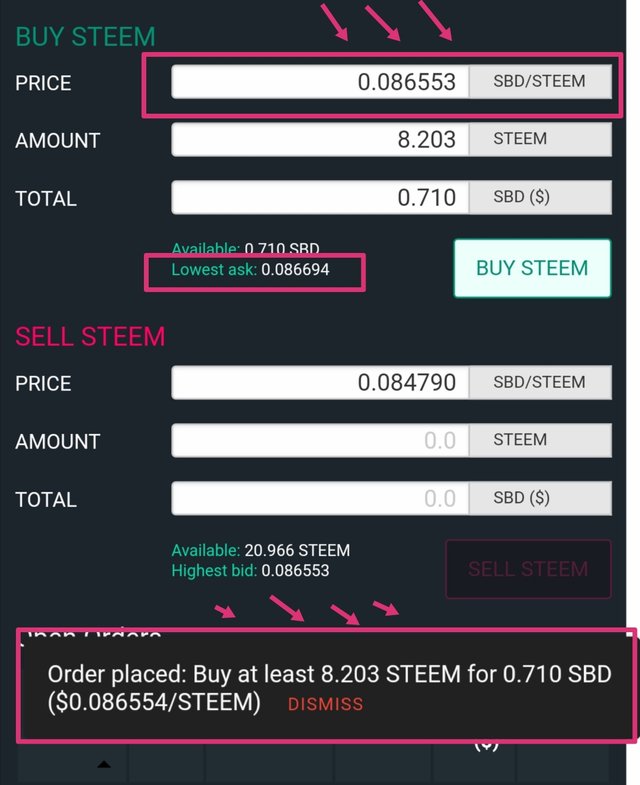
From the above we will see that I have played the role of a market market by choosing to trade SBD for Steem at my preffered price.

Now the order will remain open until the desired price is achieved in the market.
Also, this order can be canceled at anytime as long as it is yet to be filled.


-Playing the role of a market taker
In order to play the role of a market taker I will have to exchange SBD for Steem by accepting the current lowest ask. This will make the order to be filled immediately.
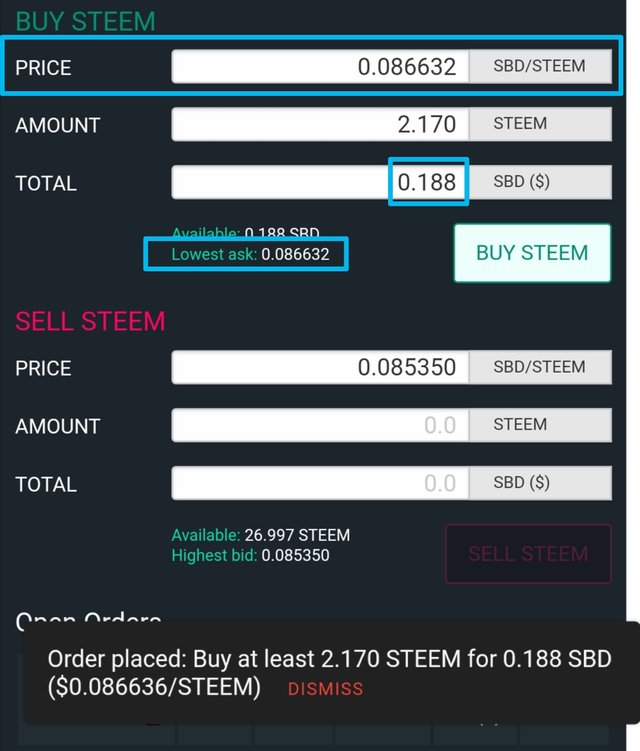
From the above, you will see that I played the role of a market taker by accepting to trade SBD for Steem at the exact market price (lowest ask).
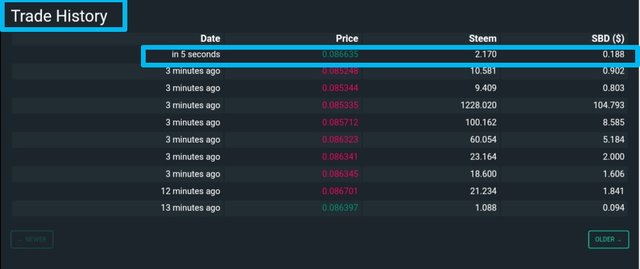
Unlike when I played the role of a market maker which saw my order listed as an open order, here my order have been filled immediately thus showing the trade history.
It is crucial that we as crypto enthusiasts comprehend the idea of market creation and market taking.
We have talked about their differences and seen that they support efficient trade activities.

Tweet link
https://steemit.com/hive-183397/@lordchuddy/facilitation-of-transactions-by-market-makers-and-takers
It is well detailed and the screenshot labeling makes it very easy to understand.
Thank you very much for appreciating my publication. I will do well to continue producing quality
Note: You must enter the tag #fintech among the first 4 tags for your post to be reviewed.